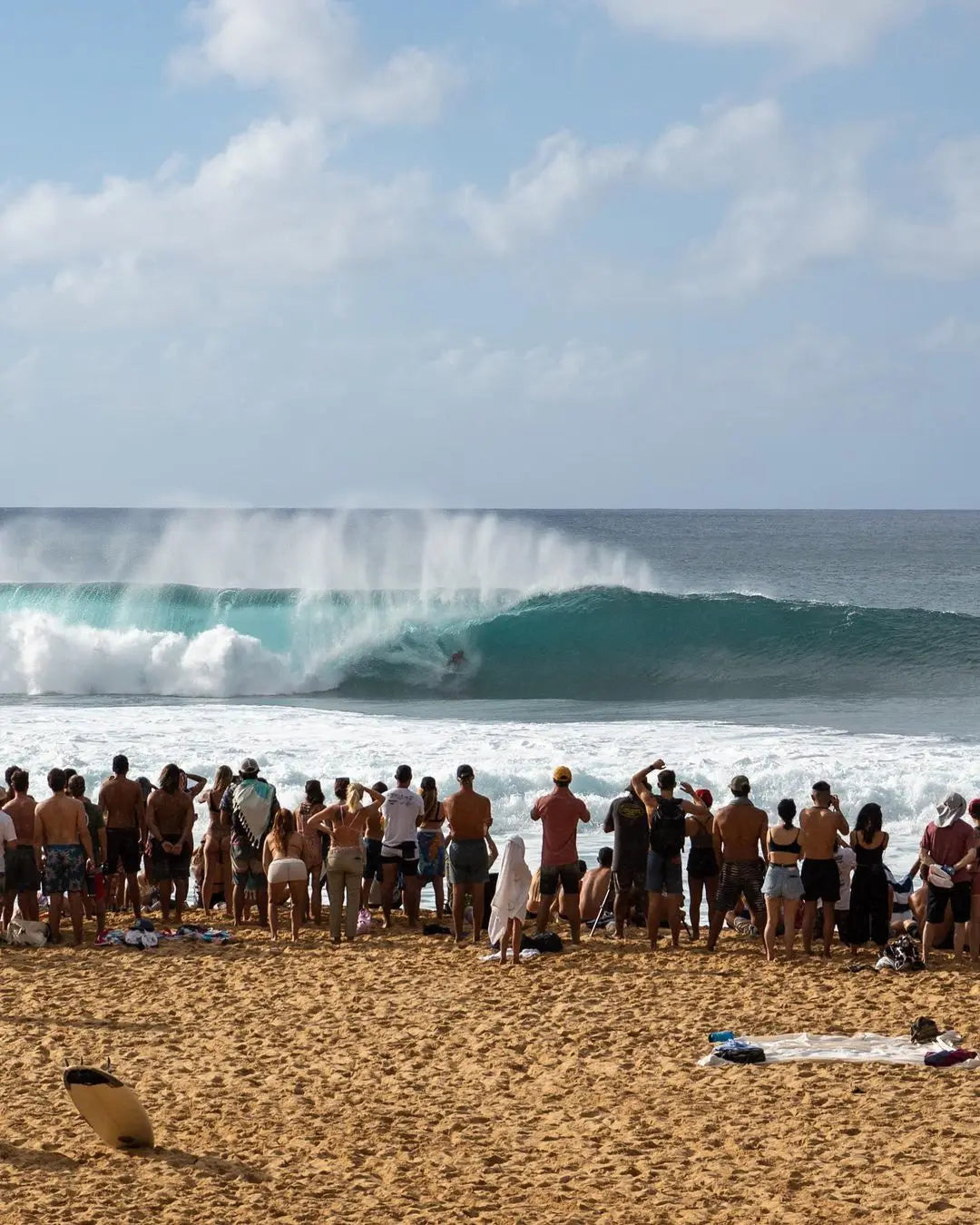Feet First Under Waves
Share
Feet First Under Waves
The other day, I was watching a life surf cam broadcast from Pipe. It was solid 6- to 8-foot—big enough for the heavy hitters to be out there, especially at a place as gnarly as Pipeline. While I was watching, I started to notice that many of the best guys out there all took a similar approach when getting caught by big sets. Instead of standing on their boards and diving under the waves, as we often see people do in old videos, the simply pushed themselves underwater feet first, let the waves pass over them, then popped right back up. I found this interesting, because I have always dived head-first under waves when I got caught by sets that I couldn’t duck dive.

Since watching that podcast, I have talked to a few people about this, including a lifeguard on the North Shore and a couple of big wave surfers. They all agreed that feet-first was the best way to go under waves—for a number of reasons.
First of all, they all seemed to dismiss the idea of standing on boards and diving off of them as a waste of time and effort. No one is really sure where that practice started, but the idea that you can stand on a surfboard on the surface water and get enough of a solid platform or height above the ocean to effectively dive into—well, for lack of a better description, that simply doesn’t hold water! It is just as efficient to simply throw your board and swim down head-first to get under the wave. But most of the people I have talked to agree that isn’t the best approach either.
Going feet-first has a number of advantages. For one thing, it makes you more likely to go feet-first into the reef than head-first. Of course no one wants to hit the reef at all, if they can help it—and often times we get ragdolled so much under water that we don’t even know which way is up and which way is down. But simply starting to submerge feet-first increases your odds of keeping your head and face safe from impact on the reef—and any advantage when it comes to protecting your head is valuable, no matter how small.
Another less-obvious advantage has to do with blood pressure. Cold water to the face and head can restrict the superficial coronary veins, which makes it more difficult for blood to pump through your body and provide oxygen to your cells. As such, the heart has to work harder, which burns up oxygen faster—a definite disadvantage when you are holding your breath underwater and getting blasted by a big wave. At the same time, having the head positioned below the heart also increases blood pressure. Instead, by keeping the head upright and going feet-first under waves, you help keep your blood pressure down and your head in warmer water near to the surface. This helps you control your heartrate and not burn through your oxygen stores during the hold-down!
